When it comes to excelling on the golf course, the significance of a well-equipped golf bag cannot be overstated. Among the many different golf clubs, the wedge holds a special place as the ultimate tool for executing precise wedge shots around the greens. Whether you’re faced with a delicate chip, a tricky bunker escape, or a demanding approach shot, having the right wedges in your bag can improve your wedge game and lower your score significantly.
In this article, we have scoured the market to present you with the crème de la crème of golf wedges in 2023. After hours of research and hands-on testing and evaluating numerous options, assessing their design, technology, performance, and overall impact on your short game. From renowned classics to cutting-edge innovations, each of these seven wedges brings something unique to the table. So, without further ado, let’s dive into our top picks of the 7 best golf wedges.
Our Top Picks
Titleist Vokey SM9 – Top Pick
TaylorMade Milled Grind 3 – Editor’s choice
Callaway Jaws Raw
Ping glide 4
TaylorMade Hi toe
Mizuno S23
Clevland RTX 6
Top Pick - Titleist Vokey SM9 Wedge
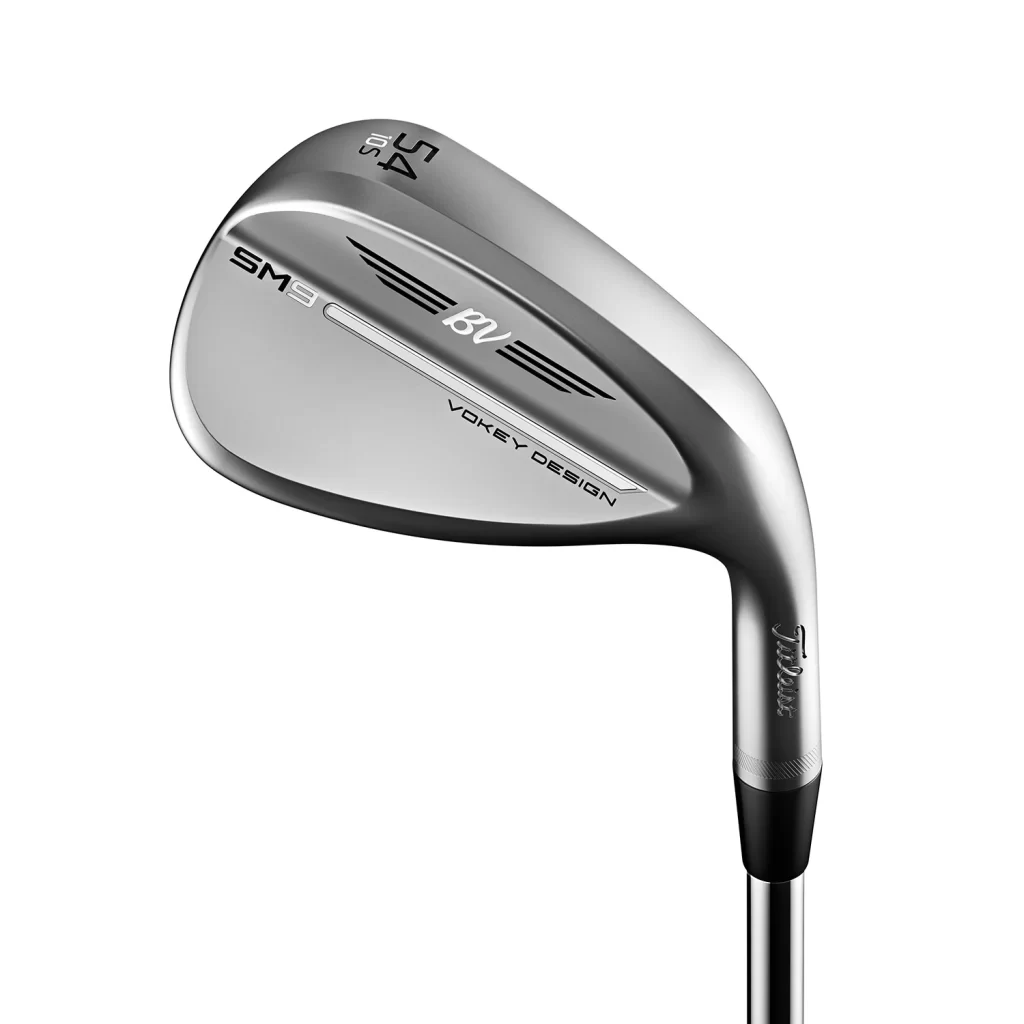
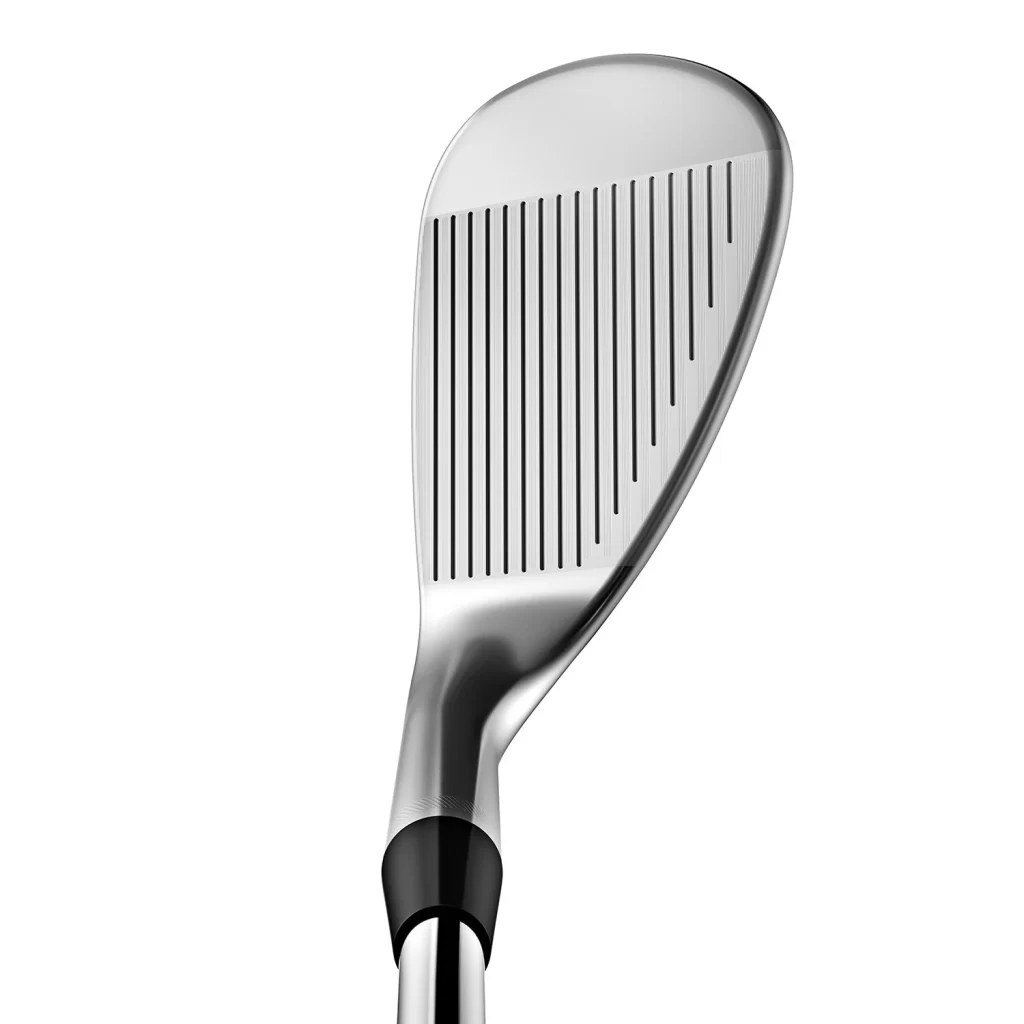
✅ Pros:
- Soft feel
- Great spin
- Looks great
❌Cons:
- None
The legendary wedge creator Bob Vokey has spent decades developing, refining, and improving the popular series of Vokey designs. Titleist Vokey Design SM9 is a further development that is adapted to allow all golfers to find wedges that suit different swings and types of surfaces.
The SM9 Vokey wedges have the center of gravity progressively positioned depending on the loft of the wedge, where a higher loft means a higher center of gravity in the blade, which optimizes both ball flight and precision.
Through a combination of the progressively positioned center of gravity, tapered toplines, and different hosel lengths in the higher lofted wedges, the SM9 wedges provide a lower and more controlled ball flight.
With its sole grind options, you also have the option to personalize your wedge to fit your game even better. The SM9 wedges have also been fine-tuned with a new milling process to make the notches sharper which in turn generates more spin to your golf balls and smoother length control.
Conclusion:
The Titleist Vokey Design SM9 Tour Chrome is carefully tailored for all golfers who want to get the most out of their close game. The SM9 is used by everyone from the pros on the PGA tour to our average golfer and that’s why we love it, everyone can play it and play it well. That’s why it tops our list of the best golf wedges.
Editors Choice - TaylorMade Milled Grind 3
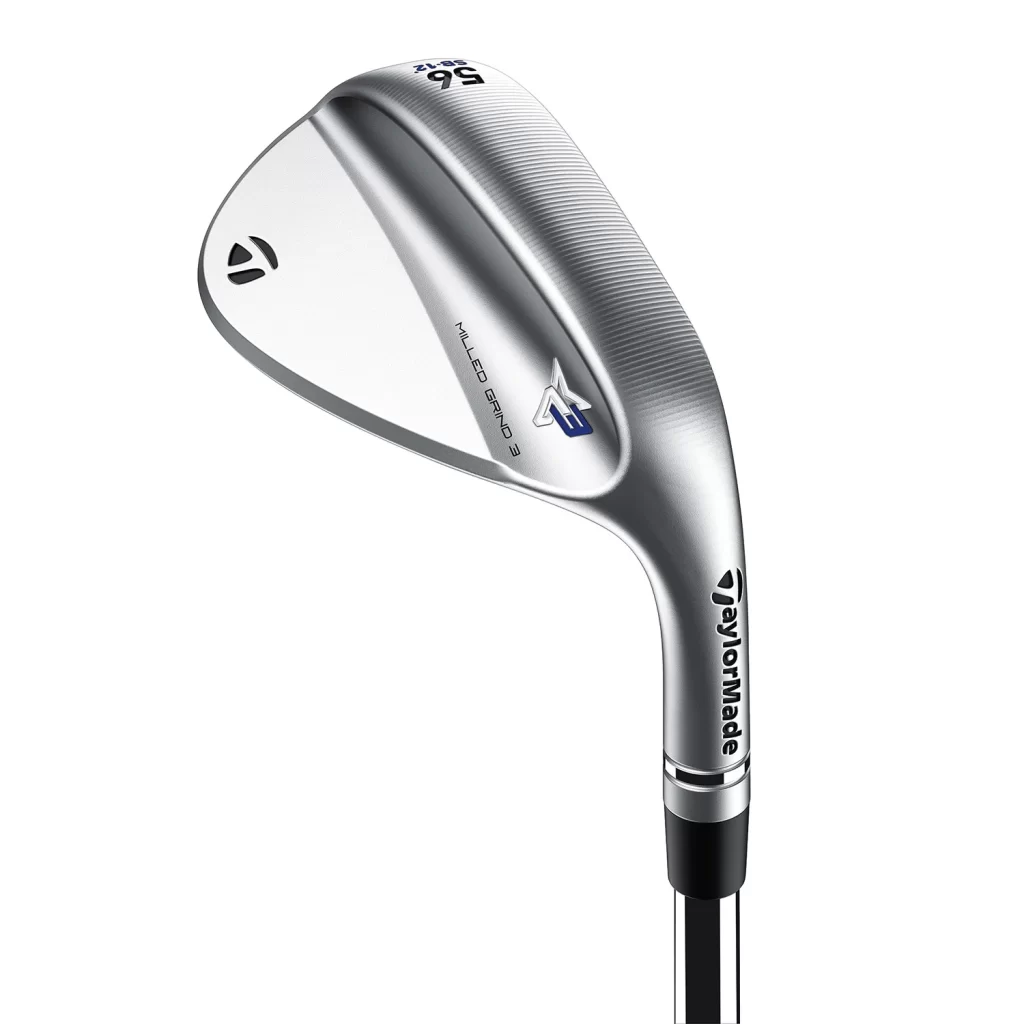

✅ Pros:
- Great Spin
- Great Feel
- Great Looks
❌Cons:
- None
The TaylorMade MG3 combines a precision milled club head with a hitting surface that has Raw Face-Technology which means it is untreated and will start to rust over time, it gives a cool look and gives you extra spin and feel.
The sole of the club head is specially designed to glide effortlessly through the grass and perform at its peak every time. With raised micro-ribs between the grooves of the face, friction is created between the golf ball and the face to improve performance in the close game.
With a ZTP Raw groove design, the hitting surface grooves have become both deeper and sharper compared to its predecessor, to provide more spin even in damp conditions.
Conclusion:
The TaylorMade MG3 is a stylish wedge with top-class spin control and feel. It has everything a good wedge is supposed to have and a bit extra. It is no coincidence that the MG3 makes it to the top half of our list of the best wedges. It simply is a wedge for those who are looking for exact precision when it is needed most.
Callaway Jaws Raw Wedge

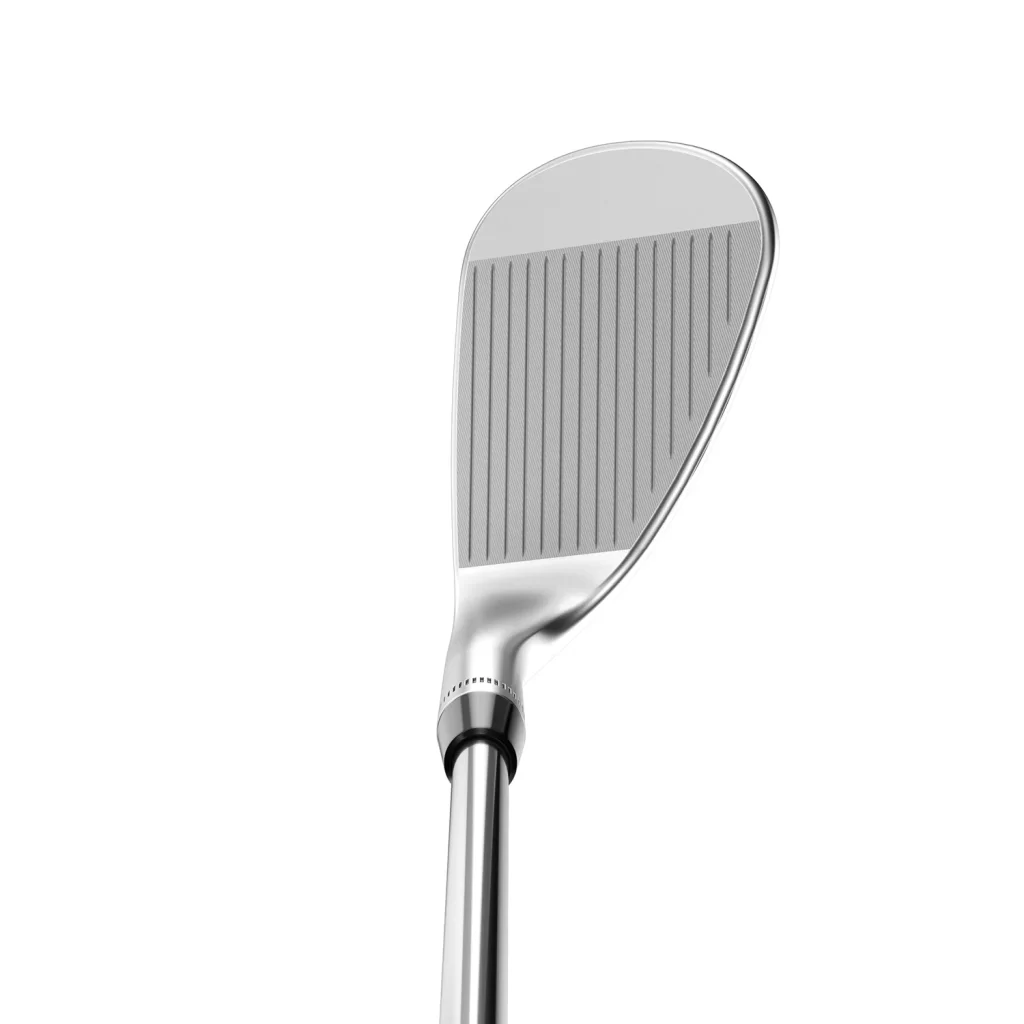
✅ Pros:
- Great spin
- Great overall feel
- Great control
❌Cons:
- Design isn’t for everyone
Callaway Jaws Raw is developed together with the experienced Roger Cleveland who produced wedges for over 40 years. Jaws Raw has, as it sounds, an untreated hitting surface that rusts over time, this means that the grooves are exposed to the maximum for increased spin.
This is Callaway’s first wedge with tungsten in the club head for improved feel and control compared to before. The grooves with the Groove-in-groove technology are that you have fewer grooves than the regular ones, all to give you a consistent spin count.
Conclusion:
Callaway Jaws wedge delivers a lot of spin both around and into the greens. A raw hitting surface that rusts over time to maximize friction. The wedge is for the golfer who wants to look for feel and spin both around and into the greens
Ping Glide 4.0 Wedge
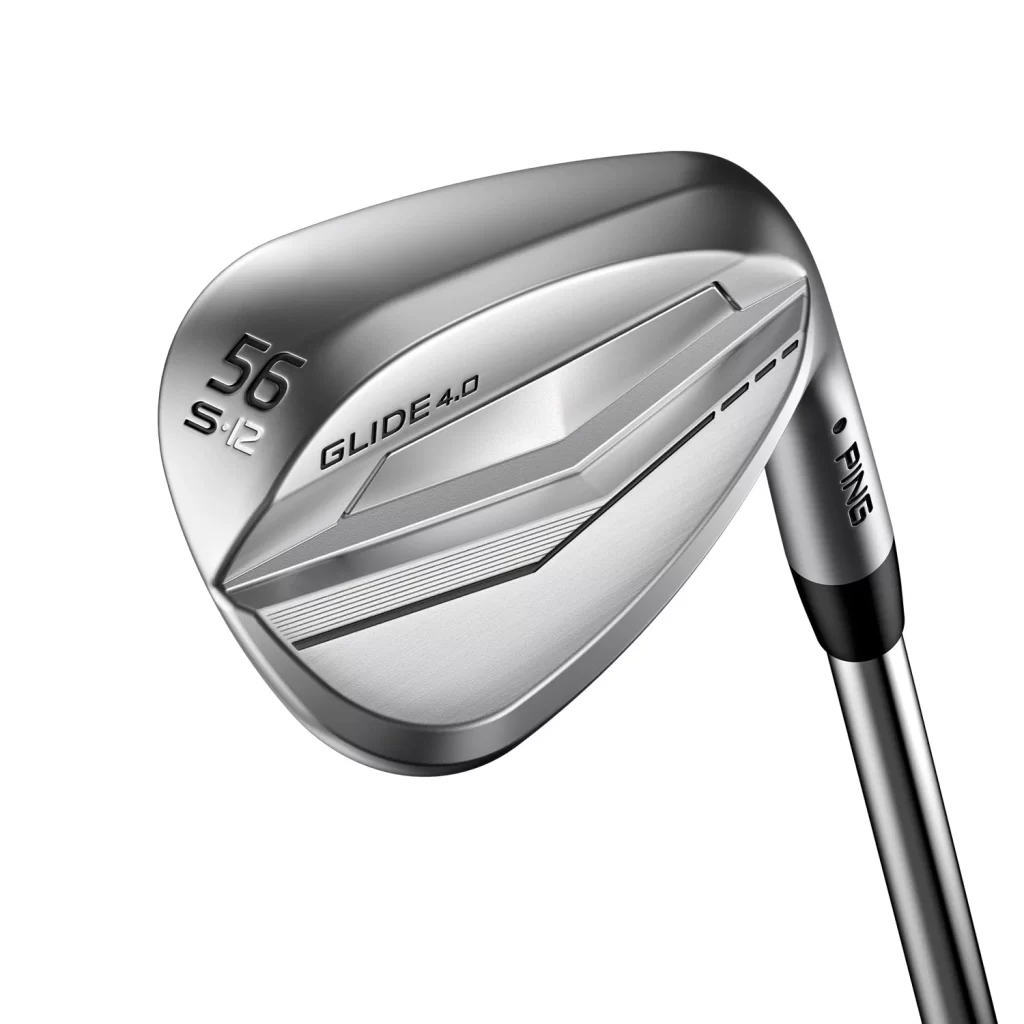
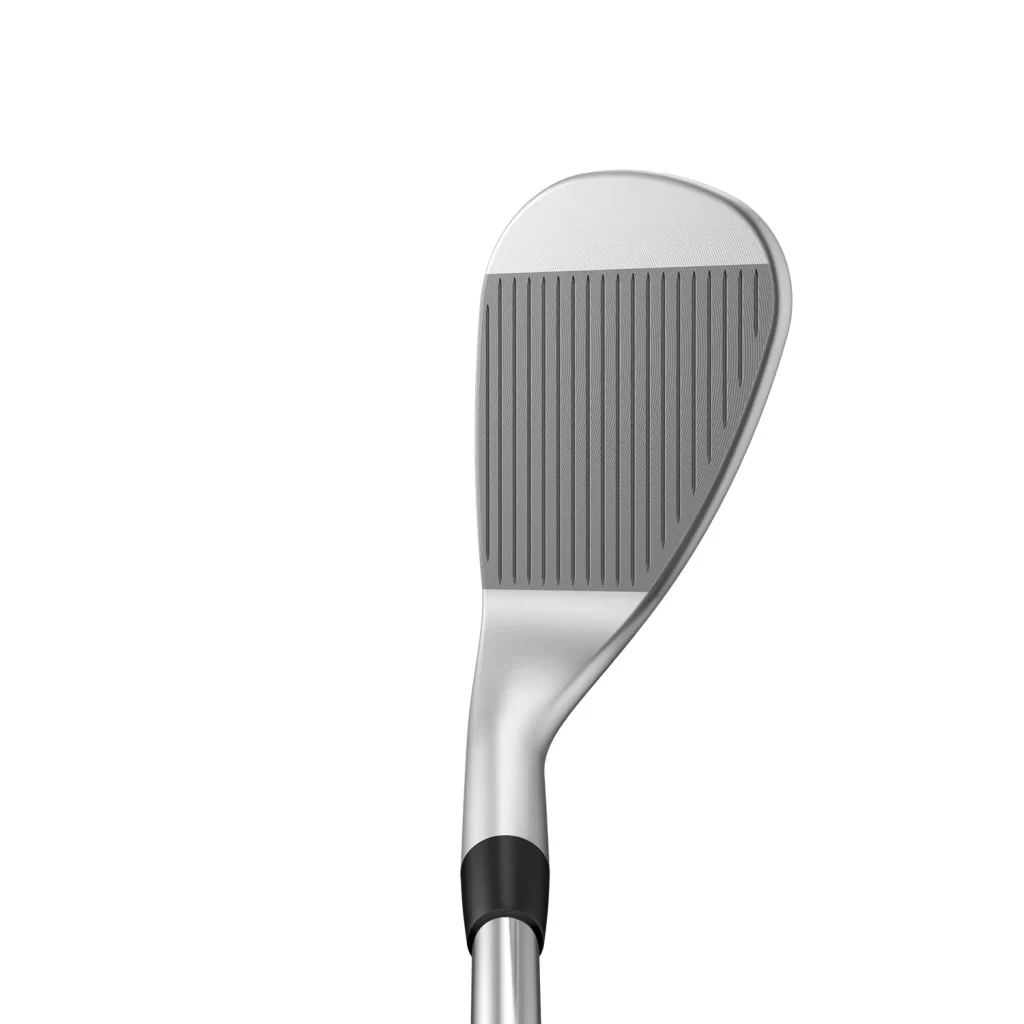
✅ Pros:
- Very customizable
- Great spin
- Great overall feel
❌Cons:
- The price tag
Ping’s popular Glide series has long been a favorite on the wedge scene. The Ping Glide 4.0 is a further development that has now been refined with a new precision-milled hitting surface that generates higher spin numbers and more consistent length control.
The club head is constructed from 8620 carbon steel combined with an elastomer insert to provide an improved and softer feel. Glide 4.0 is rounder in shape and has a slightly more compact design than before, which gives it an appealing appearance. Combined with the precision milled face, the new Emery Face Blast adds more texture to the face, which in turn provides more friction and more interaction between the club and the golf ball, which creates more spin and a slightly lower ball flight.
Through four different sole sharpenings – S, W, T, and E – all golfers are given the opportunity to find a wedge set that suits their close game.
Conclusion:
The Ping Glide 4.0 has everything you need in a wedge and more. If you are a golfer who has problems creating spin this wedge is going to be your best friend around the greens and your short game is going to thank you.
TaylorMade Hi-toe Wedge
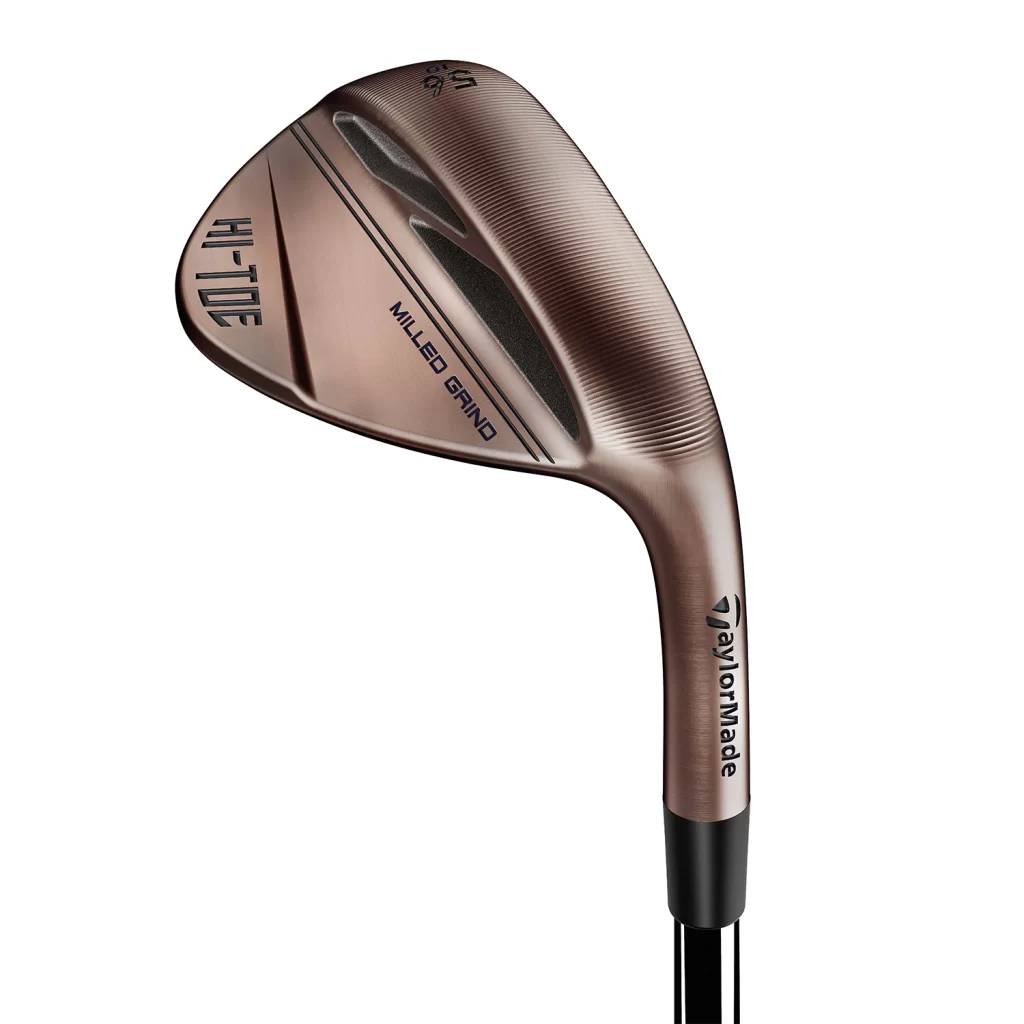
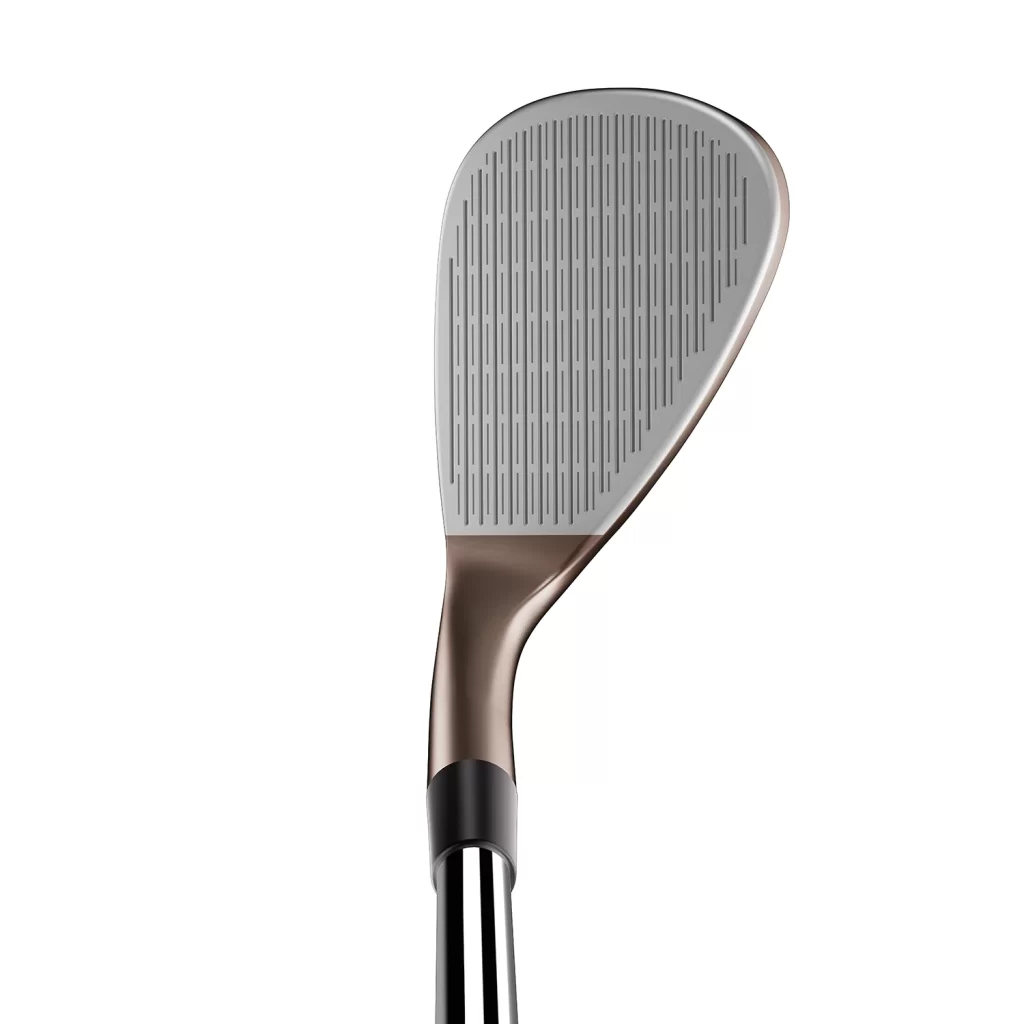
 Pros:
Pros:
- Forgiving
- Loads of spin
- Feels great
 Cons:
Cons:
- Design isn’t for everyone
The TaylorMade Hi-Toe has a higher toe construction and is designed to provide better spin and launch angle for optimal length control and spin into and around the green.
The all-over grooves on medium and high lofts cover the entire face to provide more spin around the green when the face opens up for shorter shots. The grooves on the lower lofted wedges, 50 and 52, have traditional hitting faces but still with a higher toe.
Hi-Toe 3 has received an extra weight higher up in the toe, which means that the center of gravity is moved closer to the center of the hitting surface to optimize the exit angle and spin.
The TaylorMade wedge has been given a brushed copper finish that will rust over time, which gives increased friction and spin for a longer period of time. The raised ribs between the grooves of the face give better structure for more spin and better performance and precision on chips and pitches and together with the further developed ZTP Raw grooves the spin is optimized regardless of weather conditions and surface.
Conclusion:
The Taylormade Hi-toe has been a leader in the wedge market for a while and it’s not by coincidence. The hi-toe wedge with its unique design with grooves covering the entire clubface that not only gives you more spin and margin of error but also a huge amount of confidence standing over the club.
Mizuno S23 Wedge
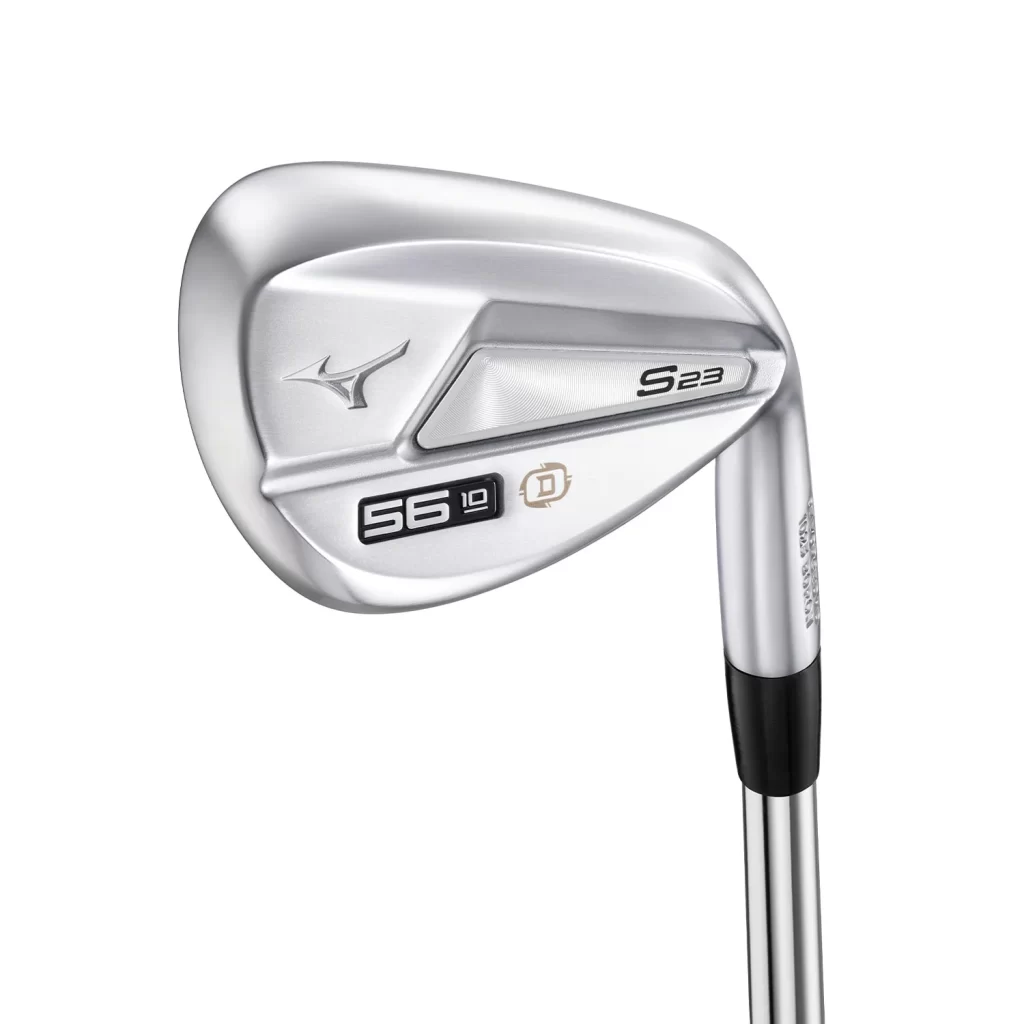
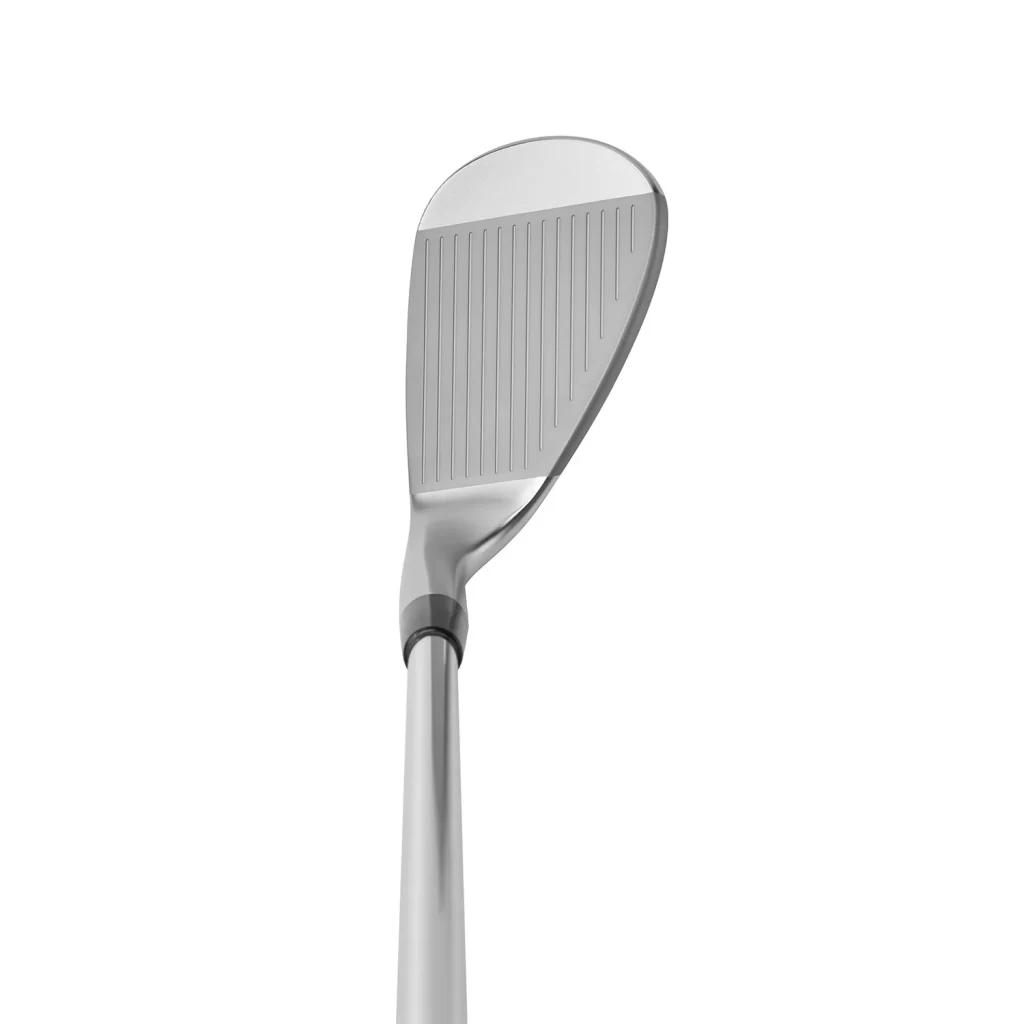
✅ Pros:
- Beautiful design
- Loads of spin
- Solid contact
❌Cons:
- More on the expensive side
With a consistent design for extreme backspin, the S23 combines the precision and profile of a blade wedge with the aggressive performance of a toe-weighted model. A shorter hosel and heel-placed cavity allows more weight to be shifted towards the toe and creates a more centered sweet spot compared to traditional wedges.
The centered sweet spot contributes to longer ball contact at the moment of impact, less clubhead deflection, and more spin from both half and full swings. Comes with the unmistakable feel of a one-piece Grain Flow Forging from Mizuno.
The stronger lofts are teardrop-shaped with a straight leading edge, and then gradually transition into a more rounded lobed edge – with suitable grinding of the sole. Mizuno’s HydroFlow Micro Grooves are laser engraved to repel moisture and reduce spin loss.
Conclusion:
The Mizuno S23 Is one of the best-performing wedges on the market right now and is made by one of the best golf manufacturing companies in the game. The Mizuno wedges with its new sweet spot technology, deliver a much more consistent strike by making it easier to find contact with the clubface and produces reliable high-spin numbers which is going to make your time by the greens much easier.
Clevland RTX 6 Wedge

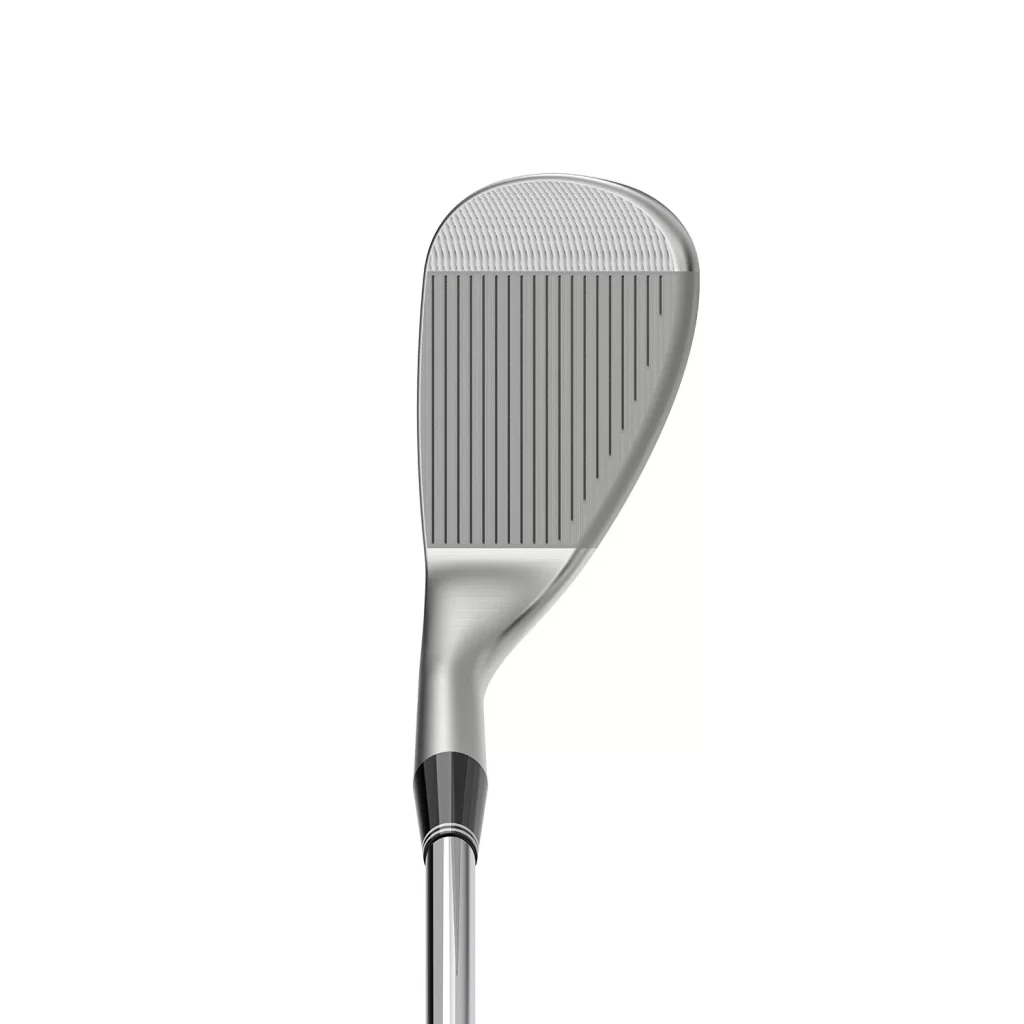
✅ Pros:
- Sleek design
- Forgvinivg
- Great feel
❌Cons:
- Price tag
The Cleveland RTX6 Zipcore is a wedge that has both feel and control of the highest class. The new improved lightweight metal core has unlocked many design knots and makes this wedge the most technical in Cleveland Golf history.
By mixing in a lightweight metal in the hosel/heel, Cleveland can free up weight and put the weight where it’s needed in the club head. This increases the clubhead’s resistance to twisting at ball impact, increasing spin and improving control wherever you hit the blade. The new Hydrazip technology increases spin in all weather conditions.
Conclusion:
The Cleveland RTX 6 is one of the most good-looking and best-performing wedges on the market. With its forgiving properties, it will make your game around the greens a walk in the park.
FAQ'S
Things to consider when buying a wedge
When searching for the perfect golf wedge to elevate your short game, several crucial factors need to be met. First and foremost, identifying your skill level and playing style is crucial. A high handicapper might opt for forgiveness and versatility, while a skilled player may lean towards precision and spin control.
The loft angle plays a pivotal role in trajectory and distance. Lower wedge lofts provide more distance, while higher wedge lofts offer better control and stopping power. Material choice, such as stainless steel or forged carbon steel, impacts both feel and durability. Your preference for a classic blade or a more forgiving cavity-back design is another pivotal decision.
Grind options can greatly influence shot-making ability. A versatile grind suits various turf conditions and shot types, while a specialized grind enhances performance on specific lies. Grip size, the wedge shafts material, and flex further personalize the wedge to your unique swing.
Choosing the right wedge bounce on a golf wedge is vital as it prevents the club leading edge from digging too deeply into the turf, ensuring clean contact. It aids in versatility by allowing players to execute a variety of shots from different lies and turf conditions. Bounce enhances consistency, control, and overall short-game performance.
Budget considerations are important, as premium wedges often boast advanced technologies, but mid-range options can provide excellent performance at a more affordable price.
Ultimately, a holistic approach is advised when selecting a golf wedge. Harmonizing loft, grind, material, and design with your individual skill level and playing style will undoubtedly help you make a confident choice and improve your short-game prowess on the green.
The different kinds of wedges
When looking to buy a wedge it is important that you can identify what kind of wedge is going to fill your needs and complement your game the most.
Pitching Wedge
- Loft: Typically between 44-48 degrees
- Function: Mainly used for approach shots, offering control and moderate distance. Suitable for shots from fairways and rough.
Gap Wedge (Approach Wedge)
- Loft: Usually between 50-54 degrees
- Function: Fills the yardage gap between a pitching wedge and a sand wedge. Versatile wedge for approach shots, providing a balanced combination of control and distance.
Sand Wedge
- Loft: Typically between 54-58 degrees
- Function: Designed for bunker shots and shots around the green from soft sand or rough. High bounce prevents digging and helps lift the ball out of sand traps.
Lob Wedge
- Loft: Usually between 58-64 degrees
- Function: Ideal for high, soft shots that require the ball to stop quickly on the green. Excellent for flop shots, getting over hazards, and hitting from tight lies.
Gap or Dual Sole Wedge
- Function: Combines features of both sand and lob wedges, providing versatility for various shot types. Aids in bunker play and high shots around the green.
Specialty Wedges (e.g., Chipper)
- Function: These unique wedges cater to specific shots, such as bump-and-run chips or shots from challenging lies. Their designs offer alternatives for particular situations.
Choosing the right wedge depends on factors like your skill level, course conditions, and preferred shot techniques. Understanding the functions of different wedges empowers you to make informed decisions and refine your short-game strategy. Remember, proper wedge selection can significantly improve your performance around the green and ultimately lower your scores.
What is bounce and why is it so important?
When looking for wedges you often stumble over the word bounce. But what is bounce and why is it so important?
Bounce, a critical yet often overlooked element of golf wedges, holds the key to unlocking precision and versatility in your short game. This fundamental feature refers to the angle between the leading edge and the sole of the wedge. Its significance lies in its ability to prevent the club from digging too deeply into the ground during impact.
When the bounce is appropriately matched to your swing style and course conditions, remarkable improvements become evident. On soft turf, higher bounce prevents excessive digging, allowing for cleaner strikes and smoother ball contact. Conversely, on tight lies, lower bounce reduces the risk of “skulling” the ball by providing a forgiving interaction with the ground.
Bounce also empowers players to execute an array of shots, from high, soft lobs to crisp, controlled chips. It facilitates consistency by ensuring that the clubhead remains level through impact, mitigating the potential for mishits caused by uneven ground.
In essence, bounce transforms your wedge into a versatile tool, adept at conquering various lies and turf types. Its proper utilization fosters confidence, enhances shot-making capabilities, and ultimately lowers scores. As you delve into the world of golf wedges, remember that understanding and harnessing bounce can elevate your short game to newfound heights of success.
What is the difference between low and high bounce?
Low Bounce
A low-bounce wedge has a smaller angle between the leading edge and the sole. This design is ideal for players who frequent firmer turf or tight lies. Low-bounce wedges minimize the club’s interaction with the ground, reducing the risk of digging into the turf. They excel at producing low, controlled shots with minimal divot, making them suitable for chip and run shots around the green. However, on softer surfaces, low-bounce wedges can be more challenging to use as they might dig too much, leading to mishits or inconsistent shots.
High bounce
Wedges with high bounce feature a larger angle between the leading edge and the sole. This design suits players who play on softer turf or encounter fluffy sand in bunkers. Higher bounce wedges prevent excessive digging by keeping the leading edge above the ground, promoting clean contact and preventing the club from getting stuck in the turf. They excel at producing high, soft shots with more forgiveness, making them ideal for flop shots and bunker shots. On firmer surfaces, high-bounce wedges might not provide as much control and could lead to the club bouncing off the turf.
Conclusion
In summary, the choice between low and high-bounce wedges depends on the type of course conditions you frequently encounter and your preferred shot-making style. Low bounce offers control on tight lies, while high bounce enhances versatility on soft surfaces. Understanding these differences allows you to select the right wedge for various scenarios and refine your short-game skills.
